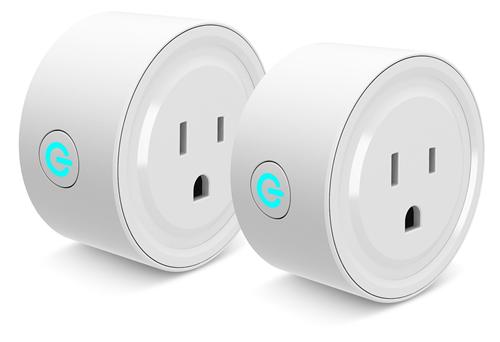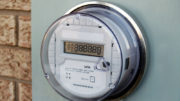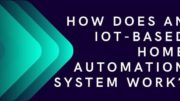In order to understand how to protect your smart home gadgets, let us explain how they work. A smart house begins with a control place or a switch. This gadget helps to arrange all the smart home activities and set up vital settings. For instance, you may have your special settings to increase the overall security of your smart home system.
Control focuses are outfitted with a screen; up to 300 gadgets can be associated with them. The framework additionally is available within an application. In this manner, your smart home can be controlled by your smartphone.
You can interface with the switch whatever is suitable and has the prefix “smart.” But the main hardware for the smart home framework are sensors, attachments, cameras, and smart machines.
Smart sensors control temperature, air humidity, and respond to smoke. This is a reliable system, if set properly, allows you to control both the comfort requirements and enhance your home’s safety, which is no laughing matter. One of the major security devices is a camera, which can be placed both outside as well as inside of your place. Smart cameras follow up on a comparative standard that records what’s going on in a house, scans faces, and dubious movements inside your property.
What Can Be Wrong with Your Smart Home Security?
Unfortunately, quite often, developers do not pay enough attention to the safety of created products. For example, there is a case where an information security researcher could find a link to the smart home system management interface directly in Google. The thing is, the page was not password-protected, so the intruder got the access to manage all smart systems, and also learned the address of the house and the phone number of its owner.
Also, smart homes’ most serious issue is that devices installed in a solitary framework can come up short and quit working. Even the most elaborated assembling organization may fail, vanish, or choose to switch to another legal name and quit supporting recently released devices, for instance, so as to decrease money related weight.
Even in the case of purchasing of devices from the notable manufacturer, the aforementioned unfortunate events might still occur later on. In any case, it is always better to learn more about the organization’s reputation, see the devices’ discharge history, break down its suitability, and study the time limits of the organization’s ensured support of their items.
However, even with all the precautions, one can still hack a smart home and be right on the spot. As a rule, when creating such systems – especially for residential premises – an additional level of new devices is simply “attached” to the existing infrastructure. New gadgets communicate with each other using protocols for wireless communication. And often, system developers choose protocols that do not require encryption, so that anyone connected to the room network can intercept data.
The Best Ways to Improve Your Security
Ensure the router
- This is the fundamental bit of hardware that incorporates every single smart gadget. In spite of the fact that homeowners regularly use routers given by Internet specialist organizations, they are not generally well-secured. The truth of the matter is that the most common problem with them is the remaining default password, which regularly stays unaltered.
In this manner, first, rename the system and change the secret phrase, utilizing a mind-boggling chain of digits and symbols.
Initiate two-factor verification
- Two-factor confirmation is a security strategy used to check a client’s personality utilizing a mix of accreditations (passwords, phone verification, fingerprints). For instance, a smartphone may demand a secret key to open, or an advanced code sent to the phone/mail. Two-factor verification ought to be actuated on a wide range of devices. At the point when utilized effectively, it is a dependable method to present an extra security level for a smart home.
- According to an independent study, it was determined that it is often faster and easier for attackers to use stolen registration data to log into accounts associated with user devices of the “smart home” than to try to crack the router’s protection. And two-step authentication can help prevent this option of remote penetration.
Disable UPnP
- Plug and Play (UPnP) is a protocol that effectively permits associated devices to perceive each other on the system for information trade. Albeit, UPnP can make a framework defenseless because of two mistakes. First, programming errors that can be utilized by cybercriminals to permit the reveal of noxious code. The second is an accidental effect that makes devices on your system effectively perceptible by different devices on a similar system. The fact is that some UPnP controlled interfaces might be available to open systems, enabling programmers to find and access their targeted devices.
- In this manner, you should disable UPnP on IoT devices. This will forestall programmed correspondence with interlopers.
Set up an optional system
- While a few homeowners make optional systems for visitors and guests, you can make them solely for IoT devices. If there should be an occurrence of unexpected disappointments, the private data of the proprietor will be secured in a different system.
Update IoT gadget settings
- Like the router, smart devices accompany default settings that should be refreshed consistently. Updates regularly incorporate necessary security improvements that shield devices from cybercriminals’ attacks. At the point when updates are disregarded, it is simpler for programmers to distinguish defects and break into the system. Obviously, IoT devices will notify you about any accessible updates, yet it is suggested that you intermittently screen the websites of IoT manufacturers yourself.
Get inspired by cybersecurity
- While these tips help guarantee the security of your smart home and IoT devices, you ought not to depend altogether on them. New digital dangers show up each day, so you should continually look for the most recent patterns and tips.





